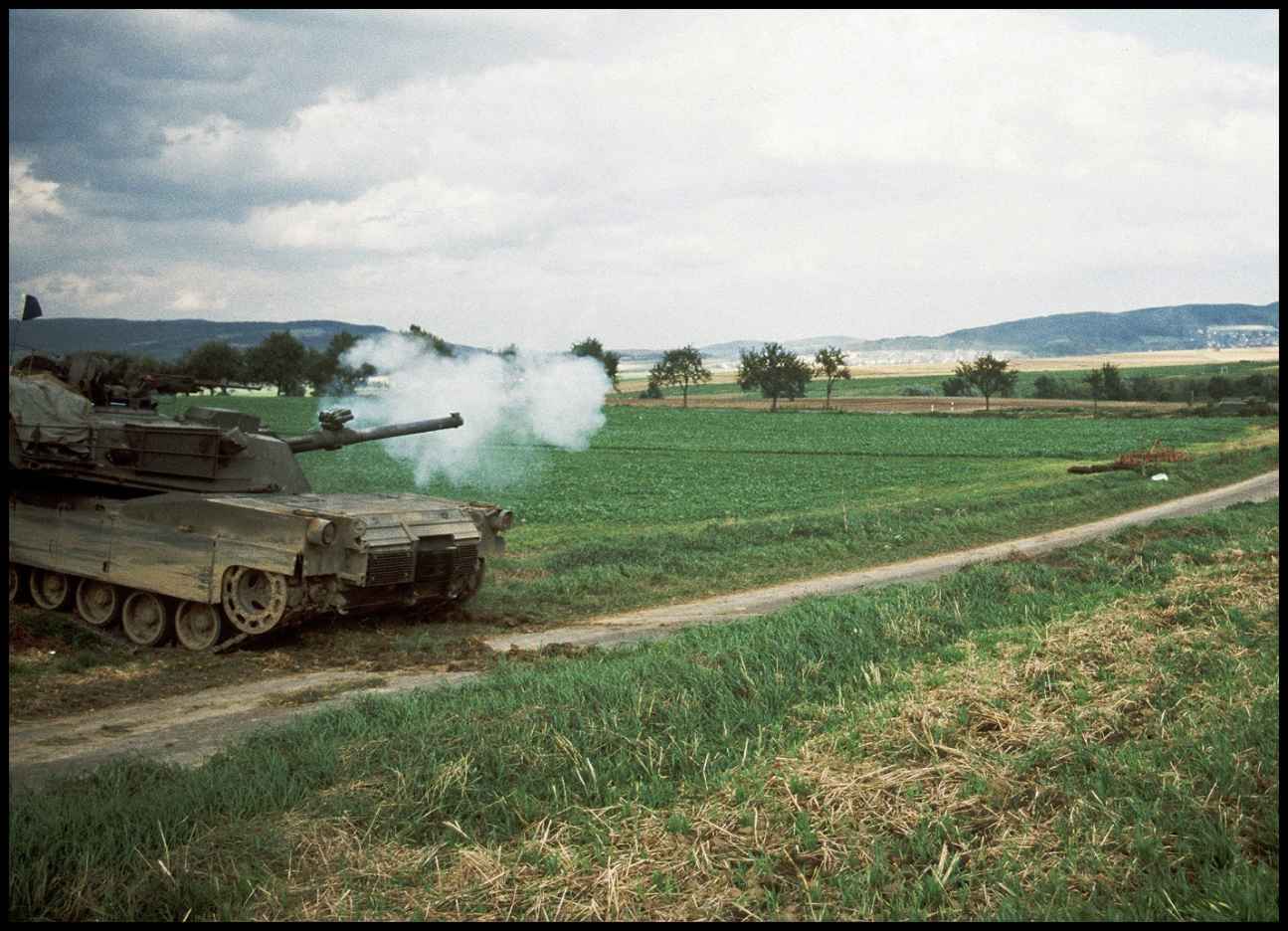Thank you for purchasing The Life of the M1 Abrams Tank . After reading this book, please take a minute or two to review this book.
The M1 Abrams Tank is now in its third generation of existence and despite a project to develop a replacement for the M1, Americas main battle tank will likely be around for a couple more decades. The M1 has seen combat in several conflicts including the Iraq War (Gulf War) of the early 1990s and the Global War on Terrorism in Iraq and Afghanistan that occurred following the terror events of September 11, 2001. We also cannot forget the Cold War in which the existence of the M1 likely helped prevent becoming a very ugly hot war.
What you are about to see is over 70 color photos, taken by mostly military combat photographers, of the M1 Abrams tank in both combat and training operations. The photos are arranged sequentially by the date the photograph was taken, oldest to newest. The goal here is to provide readers with a look at the M1 tank in action throughout its life up to the 2000s. Most of these photos were obtained from the National Archives and Records Administration in Washington D.C.
I dedicate this book to all the Soldiers and Marines who have lost their lives as crewmen of M1 tanks of the United States and its allies.
1970s Development and Prototype Selection
Since the early 1960s U.S. defense ordnance workers and contractors had been working on a new main battle tank design to replace the M60 tank. A larger caliber gun and better protection for the crew were desired. After years of development in the 1970s, two prototypes emerged in 1976, one from General Motors and another from Chrysler. Even though Army leaders preferred the GM prototype, politics and special interest led to the Chrysler prototype being selected.
Regardless of which prototype was better, what resulted was a nearly 55 ton killing machine powered with a turbine engine and eventually a 120 mm smoothbore cannon. Improvements over the M60 were also made in several areas including optics, night vision, suspension, armor, and speed.
The M1 tank was built to counter tank advances made by the Soviet Union. Fielded in 1980, the M1 had a 105 mm main gun which was later upgraded to a 120 mm bore. From initial fielding until 1990, the M1 would see a training role only. Ironically, the Soviet Union crumbled shortly after the M1 saw its first actual combat in early 1991 during the Gulf War, also known as Operation Desert Storm.

1976. The original U.S. Army XM1 Chrysler prototype main battle tank on display at the U.S. Army Aberdeen Proving Grounds. Photo by Don S. Montgomery, USN (Ret.).

1976. Rear view of the original U.S. Army XM1 Chrysler prototype main battle tank on display at the U.S. Army Aberdeen Proving Grounds. Photo by Don S. Montgomery, USN (Ret.).
1980s: Cold War Stare Down and Train up
The 1980s, now considered the good old days by many members of the U.S. military, saw the M1 enter widespread use in the American military but only in a training and guard duty role. There were few conflicts during the decade as the United States and the Soviet Union faced off along the Iron Curtain which spread across Europe and along the Demilitarized Zone separating North and South Korea. The biggest operations included the Invasion of Grenada in 1983 along with the peace keeping mission in Beirut, Lebanon in 1982-83 which resulted in the tragic loss of over 200 Marines, sailors and soldiers in a terrorist bombing. There were also retaliatory airstrikes against targets in Libya, Iran and other countries, along with a troop deployment to Honduras. At the tail end of the decade, American forces invaded Panama in Operation Just Cause to oust President Manuel Noriega who was accused of drug dealing. However, none of these operations involved the M1 Tank. With the entrance into the 1990s that green horn status would change for the M1.

September 1, 1982. A U.S. Army M1 Abrams tanks kicks up a cloud of dust in the German countryside while participating in Reforger '82, the multi-national military training exercise. Photo by Staff Sergeant Bob Simons, USA.

1983. A close-up of the front of an M1 Abrams main battle tanks on maneuvers at Fort Knox, Kentucky. Photographer unknown.

1983. An M1 Abrams main battle tank assigned to the 1st Platoon., Troop E, 2nd Battalion., 6th Cavalry., lays down a smoke screen while on maneuvers at the U.S. Army Armor Center in Fort Knox, Kentucky. Photo by Steve Catlin.

1983. A group of M1 Abrams main battle tanks on maneuvers at Fort Knox, Kentucky. Photographer unknown.

August 15, 1984. The first M1 Abrams main battle tank to be drawn from a prepositioning of materiel configured to unit sets (POMCUS) site in West Germany is driven out of a warehouse for fueling. The tank will be used during Spearpoint '84, a phase of Exercise Reforger '84. Photo by Specialist 5 Vincent Kitts.

August 15, 1984. Colonel Benjamin W. Covington III, commander, 1st Tiger Brigade, 2nd Armored Division, speaks to his troops while standing on an M1 Abrams main battle tank. The brigade is preparing for deployment to West Germany for Spearpoint '84, a phase of Exercise Reforger '84. An Army color guard stands at attention. Photo by Specialist 5 Vincent Kitts, US A .

August 15, 1984. An M1 Abrams main battle tank is guided out of a warehouse by a member of the 1st Tiger Brigade, 2nd Armored Division, for use during SPEARPOINT '84, a phase of Exercise Reforger '84 in West Germany. This was the first M1 to be drawn from a prepositioning of materiel configured to unit sets (POMCUS) site. Photo by Specialist 5 Vincent Kitts.























